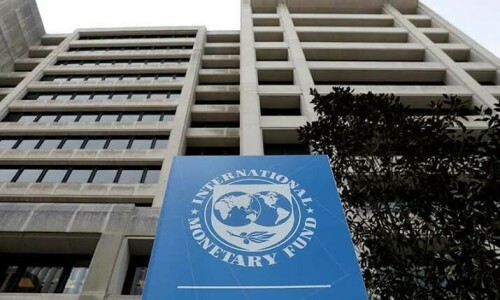ISLAMABAD: In the wake of massive floods which uprooted millions from their homes, the risk of gender-based violence and child protection concerns have increased twofold since the deluge swept across Pakistan.
“The flooding has compounded protection risks, such as family separation, gender-based violence (GBV), and theft and assault…and women and girls remain acutely vulnerable” to violence, said the Protection Sector — a coordinating body for humanitarian protection activities, comprising UN and non-UN agencies and other stakeholders.
According to recent International Rescue Committee assessments in Sindh and Khyber Pakhtunkhwa, more than half of women in these provinces had insufficient access to suitable latrine facilities. They also faced growing vulnerability to violence while using WASH facilities whereas 100 and 65 per cent of surveyed women and girls in Sindh and KP, respectively, reported inadequate access to menstrual hygiene items.
Read: Shame, misery as disastrous floods leave many without toilets
The assessments also identified safe spaces and shelters for women and children as priority needs, with people in displacement sites facing heightened protection risks and insecurity.
Flooding in Sindh accounts for nearly 72pc of standing water countrywide
US wraps up relief operation
Meanwhile, the US Central Command (Centcom) completed air operations transporting emergency relief commodities from the warehouse of USAID in Dubai to Pakistan in support of the relief operation led by the USAID disaster assistance response team.
The US transported nearly 630 tonnes of relief commodities — sufficient to provide shelter support for more than 335,000 people via 15 flights. These flights were in addition to two from Sept 8 to 16, to move the personnel and equipment needed to offload the commodities to and from Pakistan, bringing the department of defence’s total flights in support of the response to 17, said a situation report by USAID.
Despite recession of some floodwaters in recent weeks, excess flooding continues to damage infrastructure, exacerbate humanitarian needs, and prompt further displacement across Pakistan, according to the UN.
As of Sept 7, floodwaters had receded from a maximum extent of approximately 32,800 square-miles to an estimated 23,200 square-miles, including a decrease of approximately 3,500 square-miles between Aug 31 and Sept 7, according to the UN Satellite Centre (UNOSAT).
However, in Sindh where 14.6 million flood-affected individuals reside, water levels only decreased by 815 square-miles during the period. The remaining floodwaters in the province account for nearly 72 per cent of all standing water countrywide, according to the NDMA and UNOSAT.
WFP deploys 14 mobile storage units
Meanwhile, the World Food Programme (WFP) continued to lead the Logistics Working Group and coordinate with the government to bolster the movement and distribution of humanitarian assistance in affected areas.
So far, WFP has deployed 14 mobile storage units in Karachi and established five warehouses located in Quetta, Karachi, Sukkur, Peshawar, and Multan districts. Furthermore, Logistics Working Group partners and the government had established four humanitarian response hubs across Balochistan, Punjab, KP, and Sindh.
IOM efforts for shelter
The International Organisation for Migration (IOM) in Pakistan and its partners were providing emergency shelter to some of the estimated 10m people displaced from their homes by the flooding. IOM and its partner ACTED have started distributing 25,000 shelter kits to families in Thul tehsil, in Jacobabad district, said IOM Chief of Mission Mio Sato.
IOM is managing the distribution hub in Sukkur where teams were working around the clock to receive, process and assemble kits, load trucks, and work with partners to deliver the shelter kits. At least, 300,000 individuals (25,000 families) are expected to immediately benefit from the kits, which were donated by USAID.
Published in Dawn, September 18th, 2022

















































